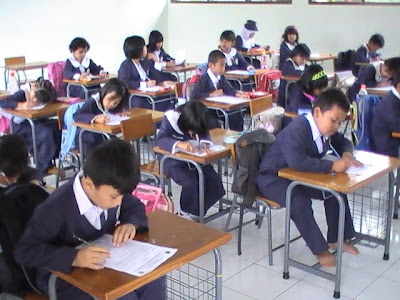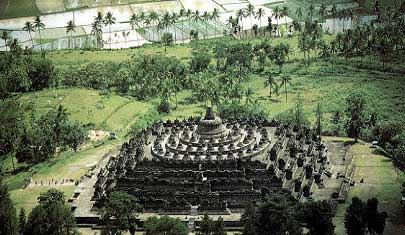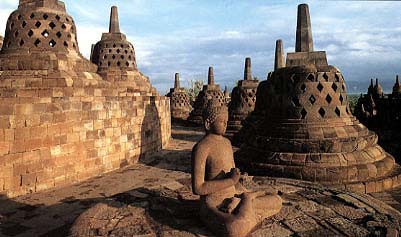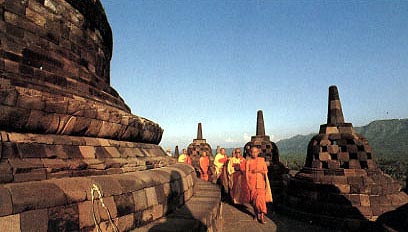

Hi, Carra. All of Bikun Students had done The Odd semester test from 14th to 17th of December 2009. They did local and International test items. 21st-22nd of December 2009, they are going to go picnic to Borobudur Temple, a famous tourist object in Central Java.The students of Bikun are going to receive the Report Progress at the 24th of December 2009 and next is Holiday time. How about Carra's concert?
We hope it is going to run well, amen.(Kartino)

Buddhist marvel of stone standing in the garden of Java, Indonesia
| The Borobodur Temple complex is one of the greatest monuments in the world. It is of uncertain age, but thought to have been built between the end of the seventh and beginning of the eighth century A.D. For about a century and a half it was the spiritual centre of Buddhism in Java, then it was lost until its rediscovery in the eighteenth century. The structure, composed of 55,000 square meters of lava-rock is erected on a hill in the form of a stepped-pyramid of six rectangular storeys, three circular terraces and a central stupa forming the summit. The whole structure is in the form of a lotus, the sacred flower of Buddha. One of the ninety-two Dhyani Buddha statues enclosed in stupas For each direction there are ninety-two Dhyani Buddha statues and 1,460 relief scenes. The lowest level has 160 reliefs depicting cause and effect; the middle level contains various stories of the Buddha's life from the Jataka Tales; the highest level has no reliefs or decorations whatsoever but has a balcony, square in shape with round walls: a circle without beginning or end. Here is the place of the ninety-two Vajrasattvas or Dhyani Buddhas tucked into small stupas. Each of these statues has a mudra (hand gesture) indicating one of the five directions: east, with the mudra of calling the earth to witness; south, with the hand position of blessing; west, with the gesture of meditation; north, the mudra of fearlessness; and the centre with the gesture of teaching.
Devotional practice of circumambulate around the galleries and terraces. Besides being the highest symbol of Buddhism, the Borobodur stupa is also a replica of the universe. It symbolises the micro-cosmos, which is divided into three levels, in which man's world of desire is influenced by negative impulses; the middle level, the world in which man has control of his negative impulses and uses his positive impulses; the highest level, in which the world of man is no longer bounded by physical and worldly ancient desire. It is devotional practice to circumambulate around the galleries and terraces always turning to the left and keeping the edifice to the right while either chanting or meditating. In total, Borobodur represents the ten levels of a Bodhisattva's life which he or she must develop to become a Buddha or an awakened one. |





